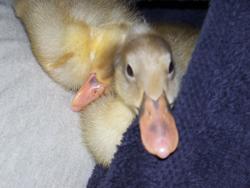

My lawn isn’t totally natural because I mow it, but I don’t use any chemicals. Despite some trees and shrubs, my yard doesn’t have ticks. We have grubs, mice, shrews, squirrels, birds, and occasional poison ivy that we pull up, but no ticks. They are in the park (with forest) a couple blocks away, but not in the trimmed lawns in my chunk of suburbia.
from Wikipedia:
Ticks like shady, moist leaf litter with an overstory of trees or shrubs and, in the spring, they deposit their eggs into such places allowing larvae to emerge in the fall and crawl into low-lying vegetation. The 3 meter boundary closest to the lawn’s edge are a tick migration zone, where 82% of tick nymphs in lawns are found.

While I tend to agree, I want to point out that it’s a very modern view point.
American pet stores these days are pet supply stores. Way back when (1970s and before), they were stocked with all kinds of creatures; some that were probably illegally imported as well as a mix of cats, dogs, rabbits, mice, canaries, and the like that were partially from people whose pets gave birth. You fancy canaries and some of hatch chicks? A nice side hustle was to sell the excess offspring back to the store. Same for mice. Stores were offered enough rabbits, guinea pigs, and kittens that they’d be overstocked if they took them all – especially kittens.
Spaying/Neutering was not common. Cats and dogs roamed off-leash and got pregnant. When you went to the grocery store, there was a fair chance someone was out front with a box of “Free Puppies!” filled with mongrels that pet stores did not want because they weren’t pure. The same was true for “Free Kittens!” but that, again, was because no store wanted as many kittens as the supply. That’s also why there were so many kill shelters: supply far exceeded demand.
I like it better now that most pets are NOT allowed to uncontrollably breed, but I do miss the chance to find some adorable mutt that isn’t half pit bull.